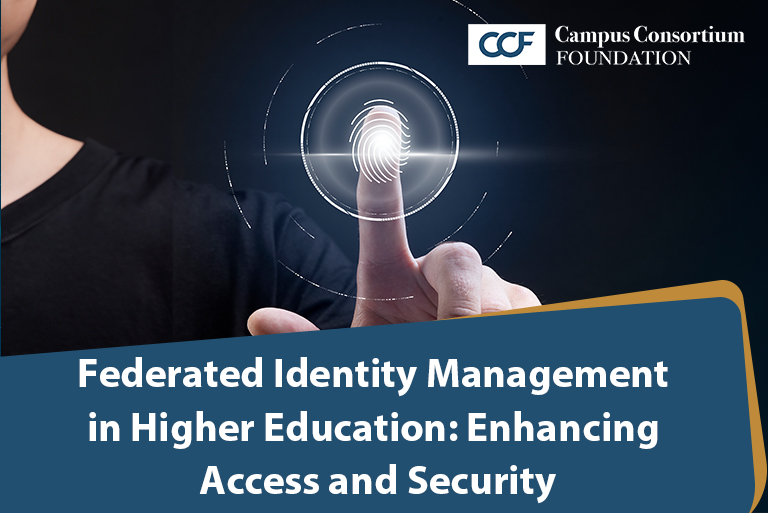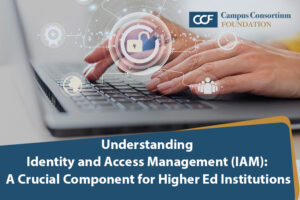As higher education expands broadly into digital learning and research, there are increasing demands for educational institutions to establish efficient and secure access to a wide range of online resources for diverse users: students, faculty, researchers, and administrative staff. Federated identity management, among others, has become an essential solution in modern times to assist higher educational enterprises in secure, seamless access, using only one trusted identity across diverse institutional systems.
What is Federated Identity Management?
Federated identity management (FIM) enables users to access resources provided by individual organizations within the federation, using one set of credentials provided by a “home” institution. This reduces the need for multiple logins and cuts security vulnerabilities. FIM in higher education involves easy access to libraries, research databases, collaboration tools, and course management using LMS with stringent control over allowing different users to access various resources.
Benefits of Federated Identity to Higher Education:
FIM allows students and higher education faculty to access varied educational resources with one set of credentials. This decreases the number of passwords remembered per user, reduces login fatigue, and makes life a bit easier in terms of convenience and consistency across platforms.
Improved security: With FIM incorporating identity management, the risks associated with multiple password and login credentials are minimized. Organizations can now apply stronger forms of authentication, such as MFA, to assist in better protecting user identities and sensitive information.
Cost Efficiency: Maintaining identities in a host of disparate systems is expensive and time-consuming. FIM automates most processes centrally on one platform, allowing the institution to be more cost-effective and devote more of its resources to student services and academic programs.
Interinstitutional Collaboration: Research is accomplished in collaboration with partners at multiple universities or even other countries. FIM supports cross-institutional access to allow researchers to share data, tools, and resources securely without the need for multiple account creation, enabling greater academic collaboration.
Key Components of Federated Identity Management in Higher Ed:
Identity and Access Management: Identity and Access Management (IAM) systems regulate access rights according to user role, which would include student, faculty, and researcher throughout an organization’s digital landscape. Being a foundational component, this provides an ability to centrally and scalable control who can access which resources.
Single Sign-On: Single Sign-On (SSO) allows users to log in once for accessing multiple resources without reentering credentials. This simply means that universities will have their students moving with much ease between Learning Management Systems (LMS), library resources, and research portals while maintaining robust security.
Adaptive MFA: Adding an additional layer of security, it uses other factors like location, device, or user behavior to verify one’s identity. An adaptive solution toward the users’ needs, it provides both security and usability.
Passwordless Authentication: Passwordless solutions replace traditional passwords by using biometric means or logins based on push notifications. In this new, modern approach, password-related risks will disappear, and there is a possibility to increase security and usability for each kind of user group. Account Self-Service Management: Self-service functional elements give users capabilities to enable self-account activation, password resetting, and viewing of profiles. This makes it easy for users and reduces the workload on administrators.
Identity Lifecycle Management: Every time students graduate, any faculties change roles, or other staff changes take place, the identity life cycle management (ILM) provides real-time updates on the access privileges of the users. This reduces risk in rapid removal of access when it is not needed anymore.
Why Federated Identity Matters Now:
With this growth in online learning and remote research, users’ expectations for flexibility and ease of access have gone up. FIM meets these expectations while allowing institutions to enforce robust security and efficient management that supports remote and hybrid models of learning. Additionally, academic partnerships continue to increase, and the system of federated identity makes collaboration easier by reducing the barriers to shared resources; it is therefore a cornerstone for modern higher education infrastructure.
As these systems of federated identity management mature, more standardization can be expected, therefore making the process of adoption and integration easier. What’s more, the increased higher education resources in the cloud create a need for identity solutions which will meet an ever-changing technological environment. Federated identity management is a shifting paradigm in access, security, and collaboration for higher education institutions. Through its adoption, universities and colleges activate an even more secure, seamless, collaborative environment for all users, building a digital experience fostering the future of education.




